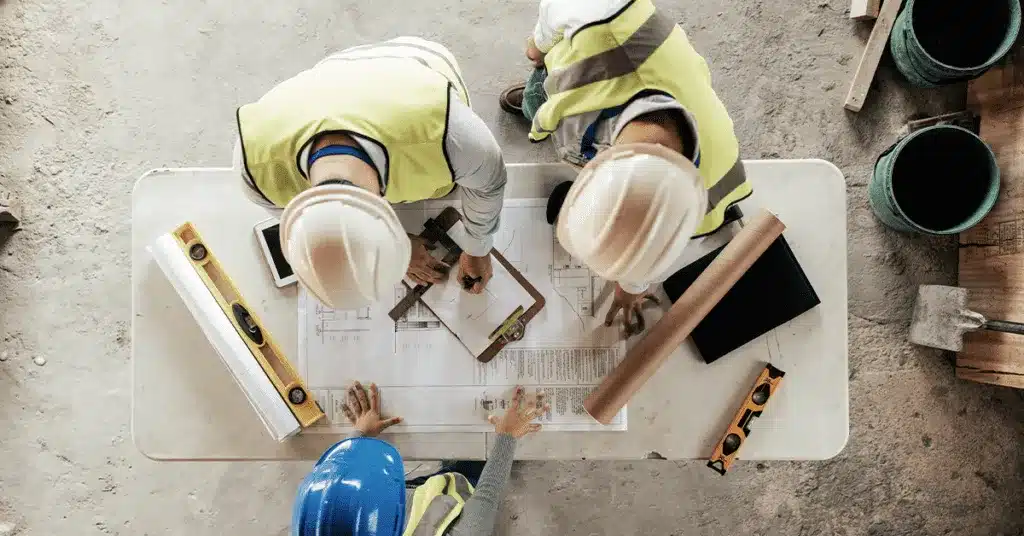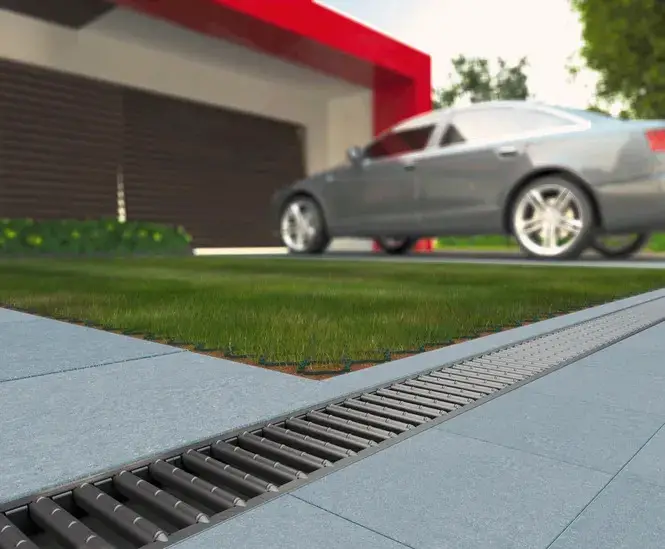The complexity of parking garage restoration projects requires a strategic approach, underlined by a deep understanding of the unique challenges they present. From identifying structural issues to selecting the right contractors, implementing effective drainage solutions, and employing durable materials, each step plays a critical role in the project’s success.
However, the journey doesn’t end there. Regular inspections, adherence to safety standards, and an emphasis on proper ventilation are equally paramount. Let’s initiate a discussion around these expert tips and their potential to reshape parking garage restoration projects.
Understanding the Project Scope
Grasping the scope of a parking garage restoration project is a crucial initial step. The project scope sets the stage for establishing the project objectives, defining stakeholder involvement, and aligning expectations.
Firstly, project objectives should be clearly defined and measurable. They may include improving structural stability, enhancing aesthetic appeal, or increasing functionality. Having clear project objectives aids in creating a roadmap for the restoration project and ensuring all team members are working towards the same goal.
Secondly, stakeholder involvement is an essential component to evaluate. Stakeholders may range from the property owner, potential users of the parking garage, local authorities, to the project manager. Each stakeholder holds different perspectives and expectations, which need to be effectively managed and aligned. Proactive engagement with stakeholders can lead to better project outcomes, as their inputs can provide valuable insights and potential solutions.
Selecting the Right Contractors

While the initial planning stages of a parking garage restoration project are vital, the selection of the right contractors is equally paramount. The success or failure of the project directly hinges on the expertise and reliability of the hired contractor. Therefore, a meticulous approach to selecting contractors, focusing on their qualifications and understanding of project timelines, is significant.
- Contractor Qualifications: When selecting a contractor, it’s important to thoroughly assess their qualifications. This includes their technical expertise, past experience, and reputation. Be sure to request and review references from previous clients and check their licensing.
- Project Timelines: Understanding a contractor’s ability to adhere to project timelines is critical. Delays can add significant costs and create logistical problems. Ask potential contractors about their track record for completing projects on time.
- Communication: Excellent communication is a key factor. The contractor should be transparent, responsive, and proactive in communicating project updates, potential issues, and changes in the timeline.
To guarantee the success of your parking garage restoration project, a keen eye for detail and an all-encompassing vetting process are required when selecting the right contractors.
Conducting a Thorough Inspection
After securing a well-qualified contractor, the next crucial step in a parking garage restoration project is executing a thorough inspection. This is a critical phase that utilizes a variety of inspection techniques to identify common deficiencies, ensuring that no stone is left unturned in the quest for a successful restoration.
Inspection should be all-encompassing, focusing not just on the apparent issues but also on hidden problems that may worsen over time if overlooked. Visual inspection is the most basic of techniques, where experts scrutinize the structure for visible signs of wear and tear. This may include cracking, spalling, or signs of water infiltration.
Non-destructive testing techniques are also employed to assess the structural integrity of the garage. These may involve ground penetrating radar, ultrasonic testing, or chloride ion testing. These techniques can identify common deficiencies such as concrete delamination, rebar corrosion, or insufficient concrete cover which can greatly affect the durability of the structure.
Thermal imaging is another valuable inspection technique. This method can detect thermal anomalies indicating water leaks or insulation issues. The data gathered from these inspections form the basis for the strategic decision-making process in the subsequent stages of the restoration project.
Addressing Structural Issues
Despite a thorough inspection process, structural issues may still arise during the course of a parking garage restoration project. These issues can potentially compromise the stability and safety of the structure, making it essential to address them promptly and effectively.
Three key steps to address structural issues are:
- Load Bearing Analysis: This is the process of evaluating the weight that structural components of the parking garage can support. Accurate load bearing analysis is vital to guaranteeing the structure’s stability and longevity.
- Identify Areas Requiring Concrete Reinforcement: After load bearing analysis, it’s important to identify areas that require concrete reinforcement. This involves adding steel bars, meshes, or fibers to enhance the strength and durability of the concrete structure.
- Implementation of Reinforcement Strategy: Once areas requiring reinforcement are identified, the next step is to strategically implement the reinforcement plan. This involves careful planning and execution to make certain that the reinforcement is effective in strengthening the structure.
Implementing Effective Drainage Solutions

Guaranteeing good drainage is an often-overlooked, yet indispensable aspect of any successful parking garage restoration project. The choice and implementation of an effective drainage system can make a significant difference in the lifespan and functionality of the structure.
There are various drainage system types to take into account, each with its own strengths and weaknesses. For instance, trench drains are excellent at collecting surface water rapidly but can be costly to install and maintain. Alternatively, slot drains offer a more aesthetically pleasing solution with fewer maintenance requirements, but they may not be suitable for areas with high water flow.
Water management techniques also play a fundamental role in implementing effective drainage solutions. These techniques can range from proper grading to guarantee water flows away from the structure, to waterproofing measures that prevent water infiltration. Additionally, regular maintenance, such as clearing debris and inspecting for damages, is essential to keep the drainage system functioning efficiently.
Choosing Durable Materials
Selecting robust and durable materials is a critical step in any parking garage restoration. The choice of materials directly impacts the longevity of the structure, its resistance to environmental factors, and overall maintenance costs. Material durability and weather resistance are two key factors to take into account in the selection process.
- Concrete: This material is renowned for its strength and durability. High-performance concrete with appropriate admixtures can resist the damaging effects of freeze-thaw cycles, deicing salts, and other atmospheric pollutants.
- Steel: When properly treated, steel provides excellent durability. Galvanized or stainless steel are good options, offering resistance to rust and corrosion.
- Waterproofing Membranes: These materials protect the structural components from water infiltration, a leading cause of deterioration in parking garages.
It’s essential to choose materials that can withstand the specific conditions of your location, whether that’s high humidity, extreme temperatures, or heavy snowfall. Additionally, the materials should be able to endure the wear and tear of vehicles and foot traffic. Choosing high-quality, durable materials might increase initial costs, but it will greatly reduce long-term repair and maintenance costs, ensuring the restoration project’s success.
Ensuring Proper Ventilation
Ensuring proper ventilation in a parking garage restoration project is both a safety imperative and a determinant of structure longevity. Attention must be paid to potential upgrades of the ventilation system, which can greatly improve overall air circulation. Concurrently, maintaining high-quality air within the garage, free from harmful pollutants, directly influences the health of both users and the structure itself.
Ventilation System Upgrades
Amidst the many aspects of parking garage restoration, the criticality of upgrading the ventilation system cannot be overstated. A well-integrated, energy-efficient ventilation system guarantees the safety and comfort of users, while also contributing to reduced operational costs.
- Energy Efficiency: Modern ventilation systems are designed with energy efficiency at the forefront. This not only reduces the operational costs over time but also contributes to the environmental sustainability of the parking garage.
- System Integration: An upgraded ventilation system should be seamlessly integrated with the existing infrastructure of the garage. This includes the electrical system, fire safety mechanisms, and control systems. A well-integrated system guarantees smooth operation and minimizes potential system conflicts.
- Future-Proof Design: Finally, considering the rapid pace of technological advancements, it is prudent to choose a system that allows for future upgrades. This guarantees the longevity of the system and prevents obsolescence.
Air Quality Maintenance
A paramount consideration in parking garage restoration is the maintenance of air quality, a task primarily accomplished through effective ventilation. In a confined space such as a parking garage, the buildup of harmful pollutants can be detrimental to both user health and the structural integrity of the establishment itself. As a result, a robust and efficient ventilation system is not just recommended, but essential.
Pollution control measures should be integrated into the design of the ventilation system. Carbon monoxide and nitrogen dioxide, two common pollutants in garages, can be noticeably reduced through strategic placement of exhaust fans and air vents. The use of carbon monoxide detectors can alert management to potential air quality issues, allowing for timely intervention.
Furthermore, regular maintenance and cleaning of ventilation equipment is vital to guarantee its ideal performance. Any blockages or malfunctions can compromise the air quality, leading to hazardous conditions. As a result, a thorough maintenance plan should be in place, detailing regular inspections, cleaning schedules, and prompt repair or replacement of faulty components.
Implementing Regular Maintenance Regimes
The implementation of regular maintenance regimes is an essential aspect of parking garage restoration. This includes scheduling routine inspections to detect and address potential issues early, prioritizing important repairs to maintain functionality, and preserving the structural integrity of the building to guarantee its longevity. These strategies contribute to the overall performance, safety, and durability of the parking structure.
Scheduling Routine Inspections
Establishing a schedule for routine inspections is an essential part of implementing regular maintenance regimes for parking garages. This systematic approach guarantees early detection of potential problems and maintains the structural integrity of the facility.
Inspection frequency is a critical factor in this scheduling process. It is generally recommended to have at least two thorough inspections per year, preferably during spring and fall, due to seasonal wear and tear. However, the frequency may increase depending on environmental factors, the garage’s usage, and the materials used in its construction.
- Create Detailed Inspection Checklists: Checklists should cover all areas of the garage, including its structural components, drainage systems, and safety features. This guarantees no critical element is overlooked during inspections.
- Professional Inspectors: Engage a team of skilled inspectors who can accurately assess the condition of the garage and identify any signs of deterioration or damage.
- Document and Track Findings: Documenting the inspection findings aids in tracking the garage’s health over time and helps foresee potential issues.
In essence, scheduling routine inspections, determining the right inspection frequency, and using detailed inspection checklists are the cornerstones of an effective maintenance regime for parking garages.
Prioritizing Essential Repairs
Upon completion of a thorough inspection, it becomes essential to prioritize important repairs as part of the regular maintenance regime. This significant step should not be overlooked, as it directly impacts the overall project timeline and cost estimation.
The initial step involves identifying and classifying the defects or damages. The classification can be based on the severity of the damage, its impact on the structural integrity of the parking garage, and the risk it presents to the safety of individuals. These factors influence the urgency of the repair, and therefore, its priority on the repair schedule.
Cost estimation is another important factor in prioritizing repairs. High-cost repairs may need to be planned for and budgeted over a longer period. However, it is important not to delay repairs that pose immediate safety risks, despite the high costs they might entail.
The project timeline also impacts the prioritization of repairs. Minor repairs that can be completed quickly might be scheduled first to minimize disruption. On the other hand, larger repairs may need to be planned during periods of lower usage to minimize inconvenience to users.
Preserving Structural Integrity
In light of prioritizing necessary repairs, it becomes equally important to maintain the structural integrity of the parking garage through regular maintenance regimes. These regimes aid in preventing minor issues from escalating into significant problems that may compromise the safety and usability of the parking structure.
To successfully preserve the structural integrity, the following steps should be meticulously implemented:
- Conduct a thorough load bearing analysis: This would involve evaluating the capacity of the structure to withstand imposed loads without experiencing undue stress or deformation. The data from this analysis will guide the necessary reinforcements and repair strategies.
- Implement reinforcement techniques: Techniques such as carbon fiber wrapping, steel plating, or epoxy injections can be utilized to enhance the strength of the structure and resist the impact of load and environmental factors.
- Regular inspection and prompt repairs: Regularly scheduled inspections are essential in identifying potential problems early. Prompt repairs prevent these issues from escalating, and consequently prolonging the lifespan of the structure.
Adhering to Safety and Compliance Standards
When it comes to restoring parking garages, guaranteeing adherence to safety and compliance standards is of paramount importance. This involves meticulously following safety regulations and being prepared for compliance audits.
In the domain of safety regulations, every aspect of the restoration project must comply with the guidelines set forth by local and national bodies. This includes, but is not limited to, the proper handling and disposal of hazardous materials, the use of safety gear by all personnel, and the implementation of procedures designed to prevent accidents and injuries. Strict adherence to these regulations not only guarantees the safety of the workers involved in the restoration project, but also the public who will be using the parking garage once the project is complete.
Compliance audits serve as a tool for verifying that these safety regulations are being followed. They involve third-party inspectors visiting the site, reviewing documentation, interviewing staff, and observing work practices. Through these audits, any gaps in compliance can be identified and rectified promptly. Ultimately, maintaining a rigorous focus on safety and compliance standards is an essential aspect of successful parking garage restoration projects.
Frequently Asked Questions
What Are the Average Costs Involved in a Parking Garage Restoration Project?
The average costs of parking garage restoration projects vary considerably, influenced by factors such as size, material, and location. A thorough budget analysis and cost breakdown is critical for understanding the financial implications of such an undertaking.
How Long Does a Typical Parking Garage Restoration Project Take?
A typical parking garage restoration project timeline varies considerably based on the scope. However, common restoration phases usually span several months, with larger-scale projects potentially requiring over a year for thorough structural and aesthetic refurbishment.
What Are Some Environmental Considerations for Parking Garage Restorations?
Environmental considerations for parking garage restorations include the use of sustainable materials to minimize ecological footprints and implementing effective drainage solutions to prevent water pollution and guarantee groundwater protection.
Can Restoration Projects Improve Parking Garage Capacity or Efficiency?
Yes, restoration projects can greatly improve parking garage capacity and efficiency. Techniques like capacity optimization and efficient layout design can enhance space use, while modern technology can streamline entry, exit, and payment processes.
How Can Technology Be Integrated Into the Restoration of a Parking Garage?
Integrating technology into parking garage restoration enhances efficiency. Employing smart sensors improves vehicle tracking and slot monitoring. Digital mapping can optimize space utilization, leading to increased capacity and streamlined parking operations.


